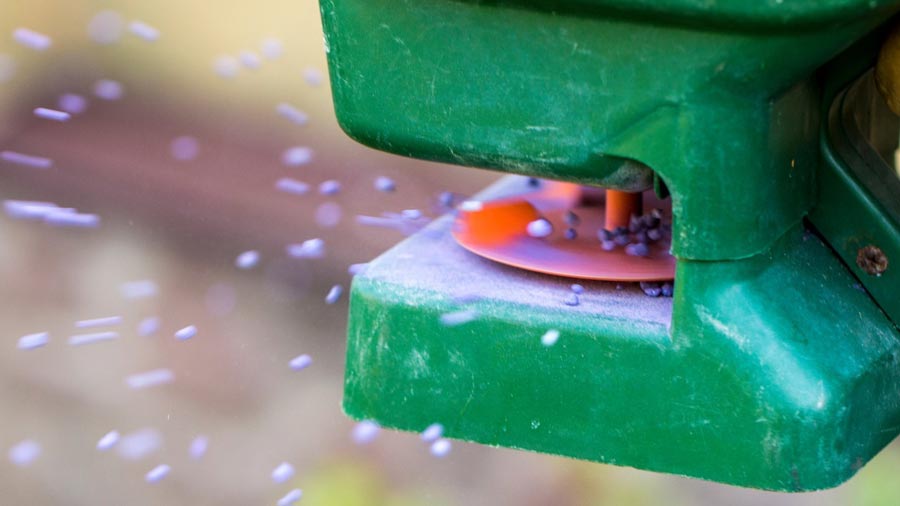Properly fertilizing your lawn will not only provide a green lawn, but also will reduce disease issues and out compete weeds.
When it comes to fertilizing your lawn there are three questions you should consider. How much fertilizer should I apply? When should I apply fertilizer? What kind of fertilizer should I apply?
How much fertilizer should I apply?
How do we decide how much fertilizer we should apply to our lawns? There are 17 essential nutrients plants need to survive. When fertilizing your lawn, there are only four that we really need to concern ourselves with, nitrogen, phosphorus, potassium, and iron. Each nutrient interacts differently in the soil based on the soil conditions. Nitrogen is very mobile in the soil and can leach through the soil and out of the root zone with water.
Phosphorus and potassium are not mobile in the soil, they do not leach through the soil, but if there is runoff, they can be lost with the excess water. Iron can become a limiting factor in alkaline soils. Make sure you are buying chelated iron so that it remains available to the grass once it has been absorbed in the soil.
The only way to truly know what nutrients need to be added as fertilizer is to determine what is already in the soil, we do this with a soil test. Your county extension educators can assist you with collecting a sample of soil that you can send into a laboratory to be tested. They can also assist you in reading and interpreting the results of the test.
Cool season lawns need 0.5 to 5 pounds of nitrogen per 1000 square feet per year. The variety of grass in your lawn will determine the more exact amounts needed. For lawns that are a mix of Kentucky bluegrass and perennial ryegrass you will need 3 to 5 pounds of nitrogen per 1000 square feet. Lesser amounts of phosphorus are needed on lawns, so make sure the guaranteed analysis percentage for phosphorus is low. Potassium can be important in the heat of the summer, follow the recommendations for nitrogen. Iron should be applied during the first fertilizer application in the spring.
When should I apply fertilizer?
Fertilizer needs to be applied based on when the plant needs the fertilizer. In the spring the lawn will be coming out of dormancy and needs enough fertilizer to help them not become chlorotic or yellow. Over fertilizing during the spring can cause over production of leaves and may cause more harm than good when the heat of the summer comes.
No fertilizer should be applied during the heat of the summer. Cool season grasses like Kentucky bluegrass, perennial ryegrass, and tall fescue will slow or even stop growing when it gets hot outside. Applying fertilizer at this time can be detrimental to the plants and even kill spots in the lawn.
When the temperatures start to cool off the grass will begin to grow again. Fertilizing in the fall is important because the plants are preparing for winter, they are bringing energy reserves into their roots.

What kind of fertilizer should I apply?
There are two basic types of fertilizers that can be applied to lawns, fast release, and slow release. Fast release fertilizers like Urea can have a more immediate effect on the grass in both good and bad ways. They can green up a lawn quickly, but if they are applied incorrectly, they can burn the lawn.
Slow-release fertilizers are more commonly used in lawns. They contain less nitrogen in the formulation than fast release fertilizers.
All fertilizers have a guaranteed analysis of what is in the fertilizer. A fertilizer with a guaranteed analysis of 10-10-10 means that 10% of that fertilizer is nitrogen, 10% is phosphorus, and 10% is potassium. If the bag of fertilizer is 10 pounds, then it has 1 pound of nitrogen.
=htmlentities(get_the_title())?>%0D%0A%0D%0A=get_permalink()?>%0D%0A%0D%0A=htmlentities(‘For more stories like this one, be sure to visit https://www.eastidahonews.com/ for all of the latest news, community events and more.’)?>&subject=Check%20out%20this%20story%20from%20EastIdahoNews” class=”fa-stack jDialog”>

